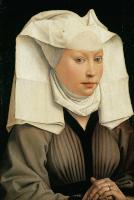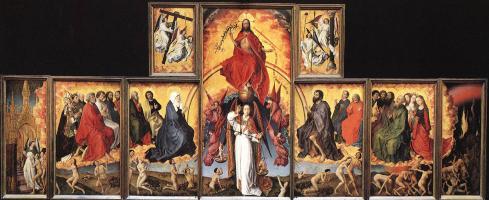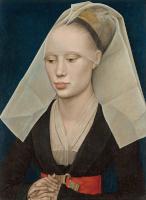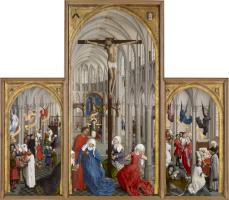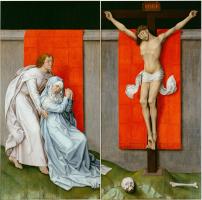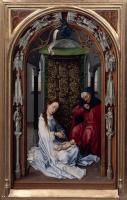Rogier van der Weyden
Rogier van der Weyden became the single most important Flemish painter following the death of Van Eyck. Since he signed none of his works, facts concerning their authenticity and chronology have to be gathered frm comparison with others and the records of those who commissioned him. The start of Van der Weyden’s career is easier to define. He enrolled in Campin’s workshop in Tournai, emerging as a master after five years and moving to Bruges, when he most probably came under the influence of Van Eyck.
After The Descent of 1435, Van der Weyden’s rise to fame was rapid, taking him far and wide in pursuit of one prestigious commission after another. When the chancellor to the Duke of Burgundy, Chancellor Rolin, founded his hospice in Beaune, Van der Weyden was called upon to decorate the chapel. In Italy, he was kept busy by the Medicis in Florence and the Estes in Ferrara. Whilst there, he also taught the technique of painting in oils, something at which Flemish painters were particularly adept. Although he favoured Fabriano and Fra Angelico, whose styles were nearest his own, Van der Weyden’s later work was certainly enriched by what he saw of Italian masters.
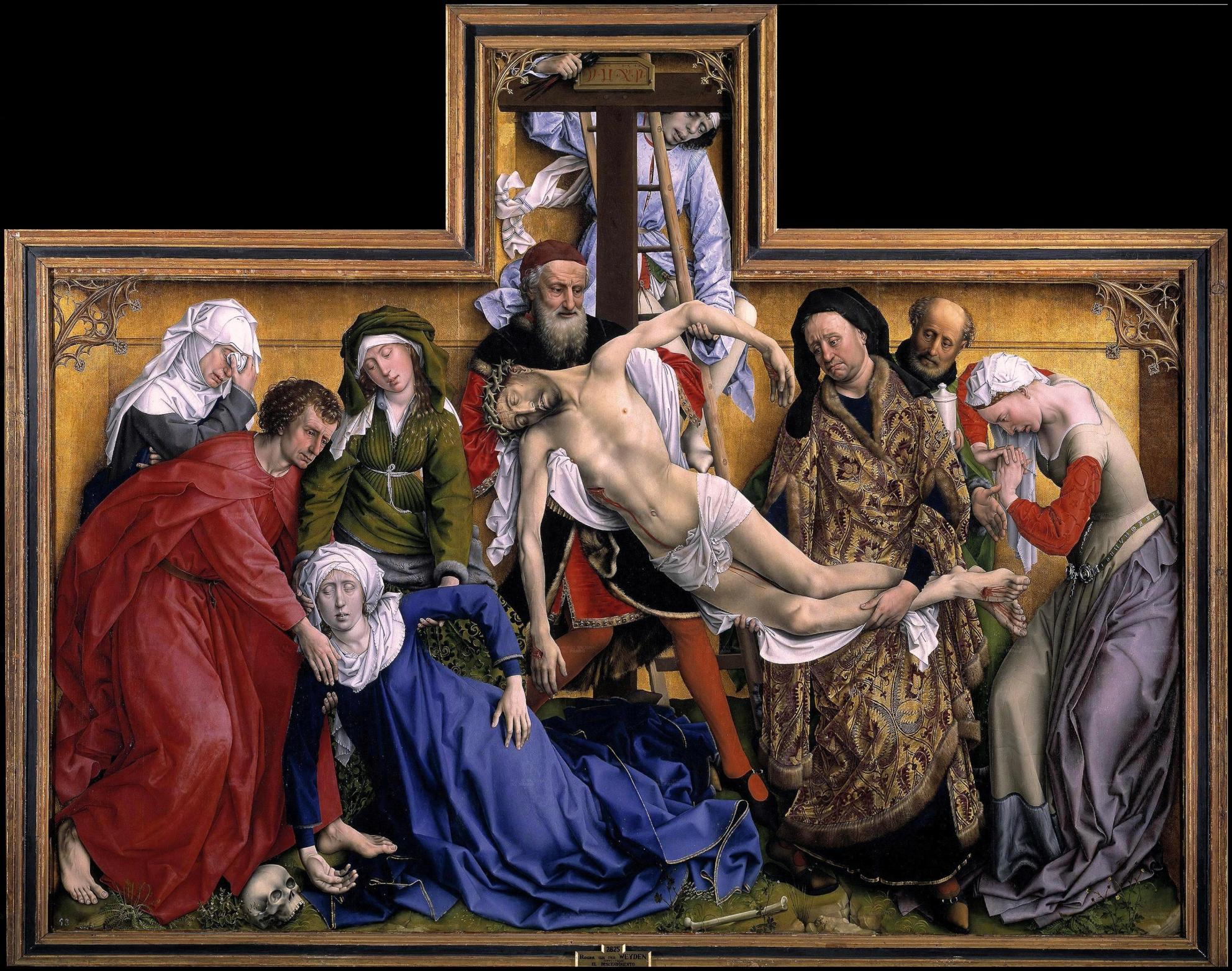 The Flemish painters who succeeded him — Bouts, Memling and Van der Goes — were all indebted to Van der Weyden, but his influence persisted even more widely for the remainder of the century, in France, Germany and Spain.
The Flemish painters who succeeded him — Bouts, Memling and Van der Goes — were all indebted to Van der Weyden, but his influence persisted even more widely for the remainder of the century, in France, Germany and Spain.
For one of the most emotionally charged pictures in the history of art, Van der Weyden has compressed the scene into a painted imitation of a gilded shrine, which concentrates the grief and despair of nine very realistic — almost life-sized — figures surrounding Christ’s body. These are not statues, they are mourners, each grieving in their own way. Through Van der Weyden’s use of rhythmic line, colour and pattern, they relate to one another in an elegaic chain of sorrow.
 By 1440, Van der Weyden’s reputation reached as far as Spain, where King Juan II of Castille founded the monastery of Miraflores, near Burgos. As a final touch, he donated an altarpiece by “Master Rogier, the great and famous Fleming”. This panel shows Mary wearing white to symbolize her purity, two others celebrate her virtues of endurance (in a red robe for pain) and faith (dressed in blue).
By 1440, Van der Weyden’s reputation reached as far as Spain, where King Juan II of Castille founded the monastery of Miraflores, near Burgos. As a final touch, he donated an altarpiece by “Master Rogier, the great and famous Fleming”. This panel shows Mary wearing white to symbolize her purity, two others celebrate her virtues of endurance (in a red robe for pain) and faith (dressed in blue).


